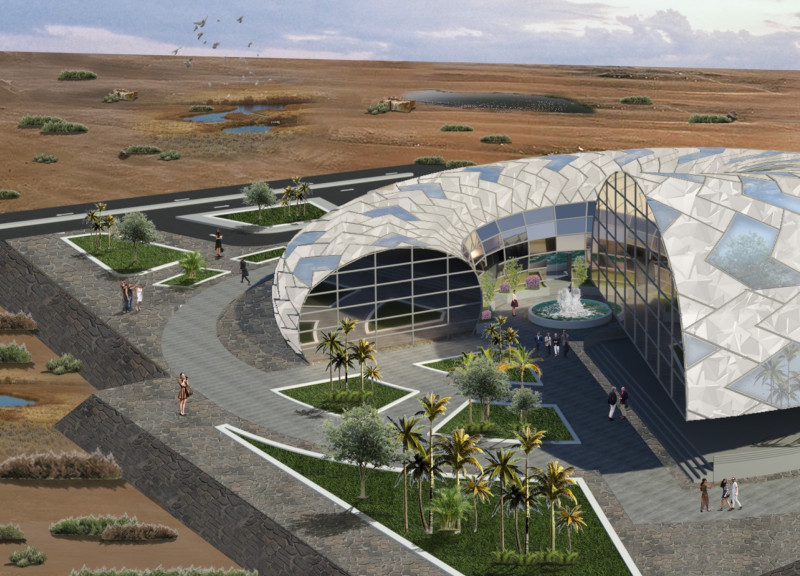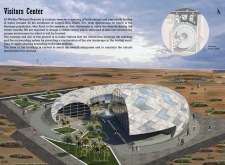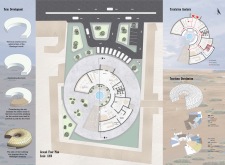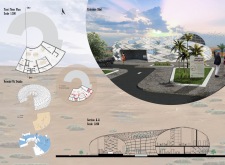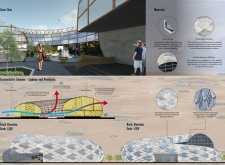5 key facts about this project
The Visitors Center at Al-Wathba Wetland Reserve is located in the southeastern part of Abu Dhabi. It serves as a place for visitors to learn about and enjoy the local wildlife, especially the flamingos that gather in the wetlands during winter. The design centers around connecting the building with nature, emphasizing organic shapes and sustainable practices.
Design Concept
The building’s form is defined by gentle curves that draw inspiration from the natural landscape. This shape helps soften the structure's presence in the environment. By avoiding sharp angles, the design aims to preserve the local habitat, making it welcoming for wildlife and visitors alike. The overall aesthetic aligns with the project’s goal of merging architecture with the natural world.
Functional Layout
The layout is designed for ease of use and visitor engagement. The ground floor includes important areas such as a gift shop, exhibition space, café, and digital room, all organized around a central court that invites social interaction. The first floor houses offices and meeting rooms, keeping the public areas separate from administrative functions. This arrangement helps to improve the flow of movement within the center, ensuring that visitors can navigate the space comfortably.
Sustainable Features
Sustainability plays a significant role in the building's design. The northern section is limited to one story, allowing cool breezes to flow through and provide comfort in the warm climate. The two-story southern part casts shade over the northern areas, contributing to a cooler environment. These features work together to support the center’s ecological goals, minimizing the impact on the surrounding area while enhancing the visitor experience.
Exterior Detail
The building's exterior draws from the feathers of the flamingo, using form and texture to create a visual link to the local ecosystem. This design detail connects the architecture to the wetlands, encouraging visitors to appreciate the diverse natural landscape. The thoughtful integration of these elements enhances the overall experience, making the center a place where nature and learning coexist.


